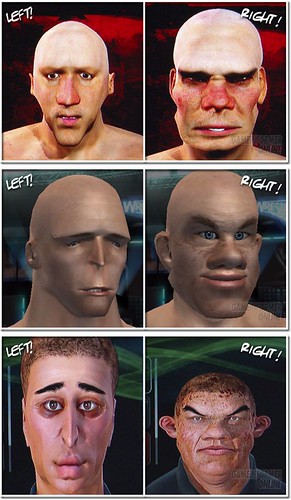Lots of news these days about Lenovo’s announcement of the “Ebox” – a game console built in and for China (as well as the rest of Asia). It’s not the first time a Chinese console has been attempted – Shanda’s own homegrown console (EZ Station) of years past had similar aspirations towards the Chinese console market. Where Shanda stumbled hard on a variety of marketing, hardware and software issues – one hopes Lenovo’s experience in device manufacturing can see them through to a retail product.
But the real challenge isn’t going to be the hardware, games or interface (though those things need to be right) – it’s going to be penetrating a market which is already saturated in terms of digital content portals. China is, by in large, an online country. Games, TV, music, movies, shopping, eating – everything is faster and easier online. How do you supplant (or just supplement) an existing digital pipeline that’s functioning well enough to turn companies like Tencent into “juggernauts“?
Here are couple of things I think they’ll have to get right if they’re going to have a chance:
1. Make it online only.
2. Build an iTunes-like store interface (easy to navigate, uncluttered).
3. Enforce platform-wide interface and quality guidelines.
4. Enable quick, easy payments for purchases (link into existing payment 5. channels used in Internet Cafes).
6. Cross market titles on and off platform (with Tencent, for example).
7. Sell it for a loss and make the profits in software.
8. Don’t make it “too Chinese” (Chinese consumers love foreign brands).
9. Attract license content which already does well in China (Transformers, World of Warcraft, Hello Kitty).
10. Partner with big brands looking to fund advertainment (Coke, Nike, Audi, etc).
Further (and probably most importantly), successfully attracting an initial market will require killer apps. Without developers to create highly creative and attractive game offerings, the platform will go nowhere. And if China’s lacking one thing – it’s a large number of developers experienced in the creation of AAA console content. Never mind the global lack of experience in creating content for motion control enabled systems like Kinect – we’re all trying to find our footing there.
Personally, I wish them all the luck in the world. It’d be great to see the miraculous growth of the Chinese gaming market bolstered by a quality console offering with the requisite offering of great games. If we’re lucky, the entry of a Chinese made contender will eventually serve to open the market to an influx of foreign made consoles and games.
A few notes in the margins… There’s a lot of confusion in Western press about restrictions on gaming and gaming consoles in China. For a primer filled with useful facts, I highly recommend reading through China gaming legal expert Greg Pilarowski’s China Video Game Industry Legal Primer (July 2010)
An excerpt from the primer reads:
In many jurisdictions, including the United States and Europe, the video game market is dominated by console games. In mainland China, however, game consoles are prohibited. In addition, video game software for use with game consoles or PCs are subject to very high piracy rates. As a result, China’s video game market is primarily an online game market, with revenues from this segment not only constituting nearly all of video game revenues, but also representing a leading internet application in the market by revenue. In June 2000, the State Council issued the Notice on Launching a Campaign against Video Arcades, which prohibits the manufacture and sale of both coin operated arcade game machines and television console game machines.
Although the stated purpose of the notice was to strike against video arcades in order to protect the youth and ensure public order, the notice was drafted broadly and is now the primary legal barrier to the importation, manufacture or sale of game consoles such as the Xbox, PlayStation and Wii.
Notwithstanding the prohibition on game consoles, there is a substantial black market for their sale in China.
And finally – many industry articles seem to take pleasure in labeling the Ebox a “copy” of the Kinect while neglecting to mention (as they once did) that Move and Kinect are themselves reactionary moves (copies) of the successful paradigm shift initiated by the Wii.



